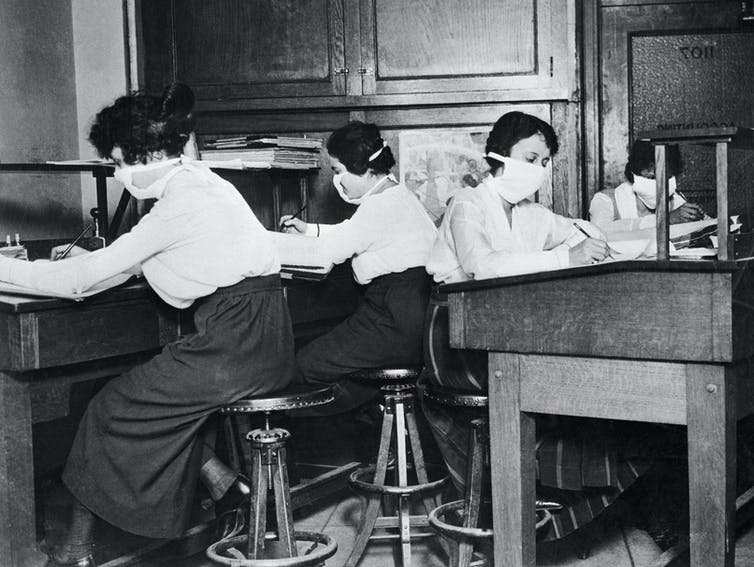More than two years after the first cases of COVID-19 were diagnosed, people are exhausted by the coronavirus pandemic, ready for all this to end. When – if ever – is it realistic to expect SARS-CoV-2 will recede from the headlines and daily life?
That’s the unspoken question beneath the surface of many of The Conversation’s articles about COVID-19. None of our authors can see the future, but many do have expertise that offers insights about what’s reasonable to expect. Here are four such stories from our archive. Written by historians and scientists, they each suggest a way to think about what’s at the end of the pandemic tunnel – and paths to get there.
1. Past pandemics are not a perfect prediction
Almost as soon as it hit, people were trying to figure out how the COVID-19 pandemic would proceed. It was tempting to look for clues in the course of the 1918 flu pandemic that killed as many as 50 million people worldwide. Could the waves of disease seen in the 1900s provide a road map for what could be expected a century later?
Daily deaths from COVID-19 were declining in the U.S. when historian Mari Webel and virologist Megan Culler Freeman from University of Pittsburgh Health Sciences cautioned against reading too much into how things had gone for people generations ago.
It was so tempting to superimpose a timeline of flu surges on the modern calendar to get even a blurry forecast of what the coronavirus might have in store for us. “Scanning the historical record is one way to draw our own lives into focus and perspective,” wrote Webel and Culler Freeman. “Unfortunately, the end of influenza in summer 1919 does not portend the end of COVID-19 in the summer of 2020.”
And for reasons ranging from biology to demographics to politics, that is one prediction that most certainly came true.
À lire aussi :
Compare the flu pandemic of 1918 and COVID-19 with caution – the past is not a prediction
2. Calling it over before it’s really over
While the 1918 flu pandemic wasn’t an exact template for how the coronavirus would sweep the world, the earlier pandemic provided plenty of parallels when it came to human behavior.
University of Michigan historian J. Alexander Navarro described how in the early 20th century Americans essentially quit on effective social distancing precautions when they got fed up with living constrained lives. Sound familiar?

During the 1918-1920 influenza pandemic, many people eventually tired of taking precautions, like wearing masks.
Bettman via Getty Images
As case numbers declined, “People clamored to return to their normal lives. Businesses pressed officials to be allowed to reopen,” Navarro wrote. “Believing the pandemic was over, state and local authorities began rescinding public health edicts.”
With the burden of public health resting on individual choices, additional waves of flu crashed over the…



